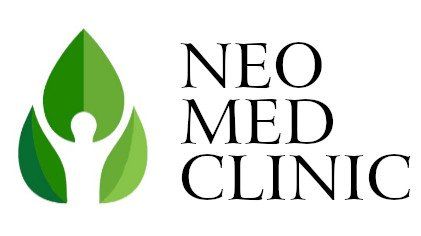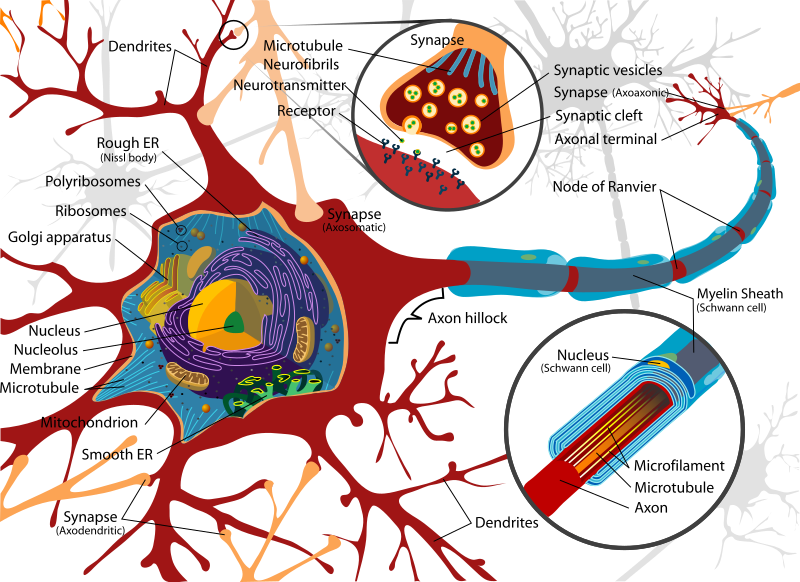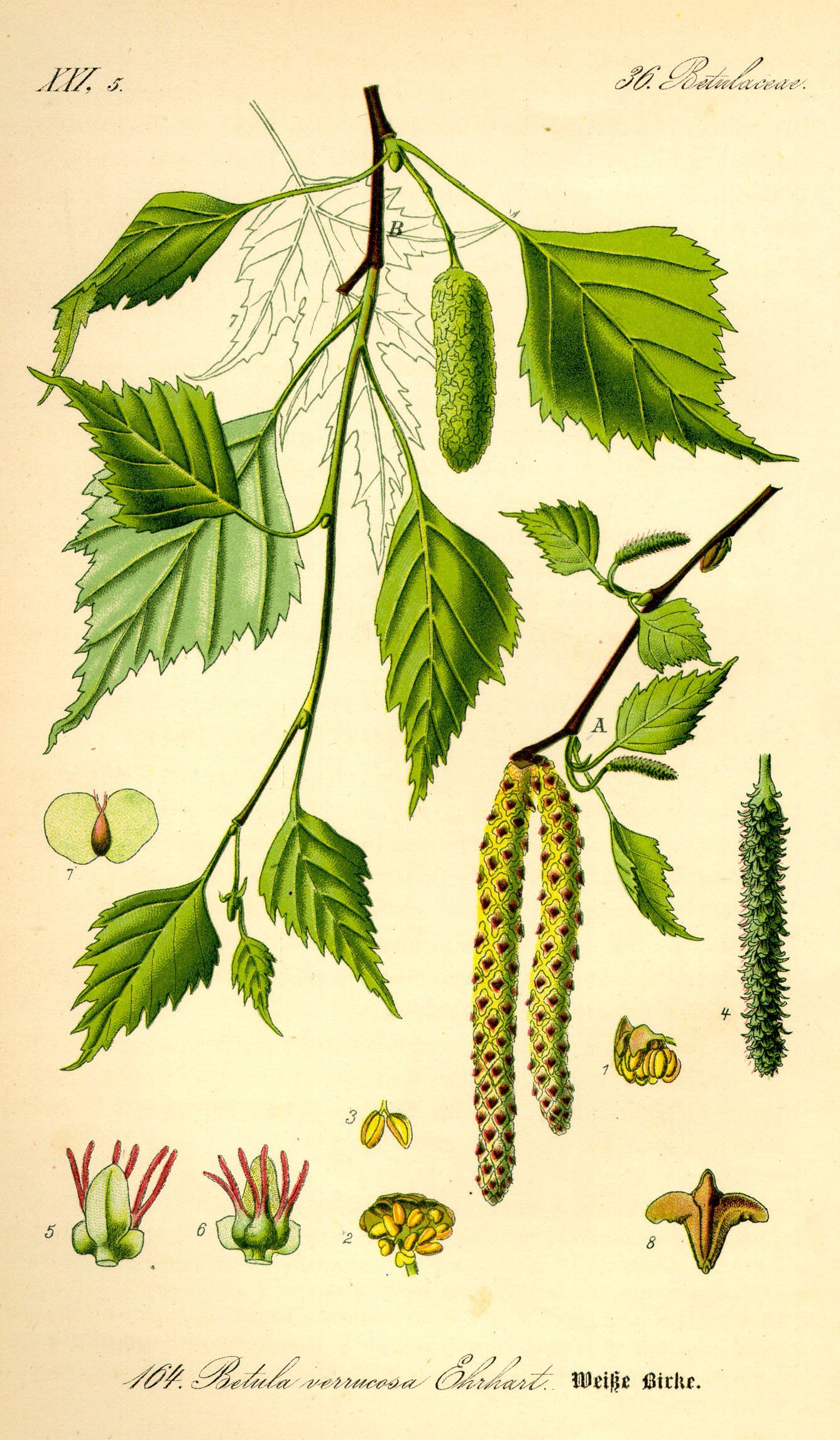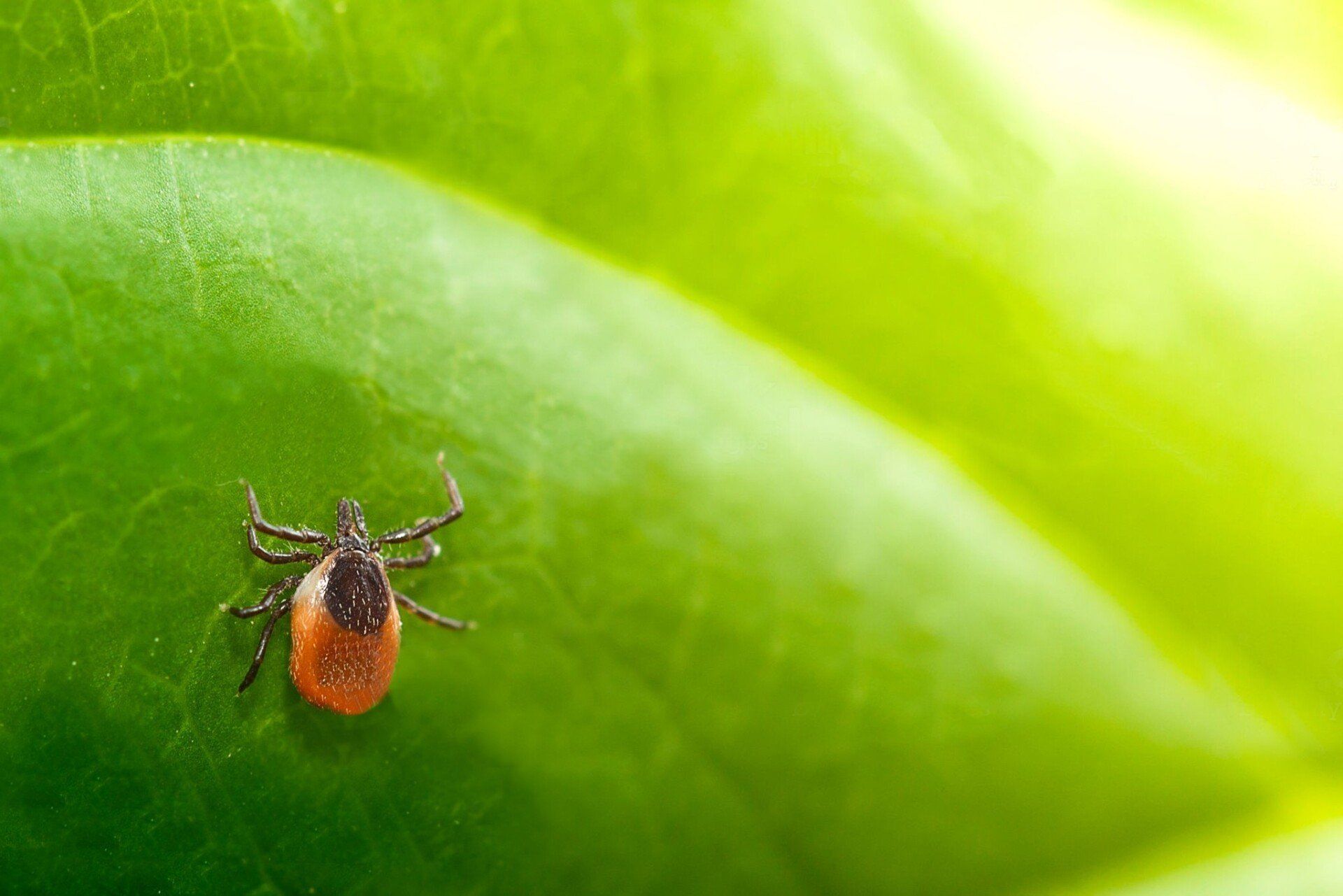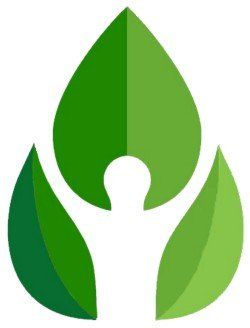Blog
NeoMed Clinic
Better information. Better health.
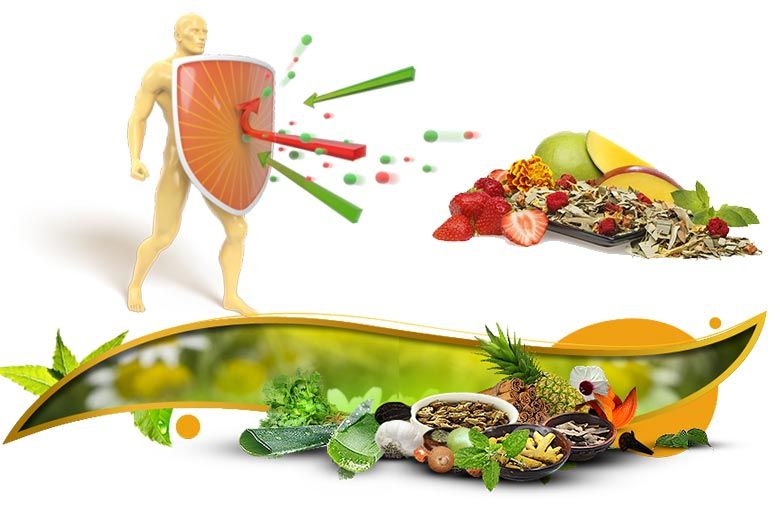
by NeoMed Clinic
•
22 Sept, 2021
1. Stay a ctive. It’s more important than ever to keep exercising. It’s been scientifically proven that moderate exercise on a regular basis boosts the immune system and minimizes the risk of illness. It’s also a big mood booster, which we all need right now. https://www.sciencedirect.com/science/article/pii/S2095254618301005 2. Reduce your stress. Too much stress negatively impacts your immune system. One of the best immunity-boosting stress-management techniques is meditation. Learning to meditate is easy. 3. Ditch the alcohol. Drinking too much interferes with the immune system, and according to research, increases your vulnerability to illness, including pneumonia and other infections. Alcohol abuse also decreases your levels of T-cells, which are the body’s natural virus fighters, making it harder to fight off illnesses. https://www.ncbi.nlm.nih.gov/pmc/articles/PMC4590612/ 4. Get adequate sleep. Sleep deprivation lowers immune function, so make sleep a priority. This study exposed participants to the common cold virus and found that people who snooze 6 hours or less are 4 times more likely to get a cold than those who slept 7 hours or more. If you need help getting the rest you need, Restful Sleep includes natural ingredients and calming herbs to help promote sustained restorative sleep. https://pubmed.ncbi.nlm.nih.gov/26118561/ 5. Power immunity with probiotics. Your gut health is tightly linked to how well your immune system functions. A study found that probiotics support healthy gut bacteria and enhance immune function. To promote gut health, eat fermented foods such as sauerkraut, kimchi or kefir. https://pubmed.ncbi.nlm.nih.gov/25311611/ 6. Optimize your vitamin D level. Having a vitamin D deficiency increases your susceptibility for infections, according to this scientific report.What’s troubling is that approximately 75% of Americans have sub-optimal levels of this important immune boosting vitamin. Natural sources of vitamin D include sunshine (about 15 minutes outside can help) and supplementing with a high-quality nutraceutical like Vitamin D3. https://www.ncbi.nlm.nih.gov/pmc/articles/PMC3166406/ 7. Eat more mushrooms. A growing body of research shows that some types of mushrooms contain immunostimulating properties. Add some shiitake or reishi mushrooms to soups, stew, or salads. And supplementing with a high-quality Chaga or Lion's Mane extract. https://pubmed.ncbi.nlm.nih.gov/12436306/ 8. Zinc Zinc is needed for immune cell development and communication and plays an important role in inflammatory response. A deficiency in this nutrient significantly affects your immune system’s ability to function properly, resulting in an increased risk of infection and disease, including pneumonia https://pubmed.ncbi.nlm.nih.gov/27255474/ https://pubmed.ncbi.nlm.nih.gov/19710611/ 9. Vitamin C This vitamin supports the function of various immune cells and enhances their ability to protect against infection. It’s also necessary for cellular death, which helps keep your immune system healthy by clearing out old cells and replacing them with new ones https://pubmed.ncbi.nlm.nih.gov/29099763/ https://pubmed.ncbi.nlm.nih.gov/9374039/ 10. Elderberry Black elderberry (S ambucus nigra), w hich has long been used to treat infections, is being researched for its effects on immune health. Elderberry extract demonstrates potent antibacterial and antiviral potential against bacterial pathogens responsible for upper respiratory tract infections and strains of influenza virus. What’s more, it has been shown to enhance immune system response and may help shorten the duration and severity of colds, as well as reduce symptoms related to viral infections. https://www.ncbi.nlm.nih.gov/pmc/articles/PMC3056848/ https://www.sciencedirect.com/science/article/abs/pii/S1756464619300313?via%3Dihub https://pubmed.ncbi.nlm.nih.gov/27023596/ 11. Selenium. Selenium is a mineral that’s essential for immune health. Animal research demonstrates that selenium supplements may enhance antiviral defense against influenza strains, including H1N1. https://pubmed.ncbi.nlm.nih.gov/30593352/ https://www.ncbi.nlm.nih.gov/pmc/articles/PMC4288282/ https://www.ncbi.nlm.nih.gov/pmc/articles/PMC6165773/ 12. Licorice. Licorice c o ntains many substances, including glycyrrhizin, that may help protect against viral infections. According to test-tube research, glycyrrhizin exhibits antiviral activity against severe acute respiratory syndrome-related coronavirus (SARS-CoV) https://pubmed.ncbi.nlm.nih.gov/12814717/ 13. Echinacea. Echinacea is a genus of p lants in the daisy family. Certain species have been shown to improve immune health and may have antiviral effects against several respiratory viruses, including respiratory syncytial virus and rhinoviruses https://www.ncbi.nlm.nih.gov/pmc/articles/PMC4058675/ 14. Propolis. Propolis i s a resin-like material produced by honeybees for use as a sealant in hives. Though it has impressive immune-enhancing effects and may have antiviral properties as well, more human research is needed https://www.ncbi.nlm.nih.gov/pmc/articles/PMC6335834/
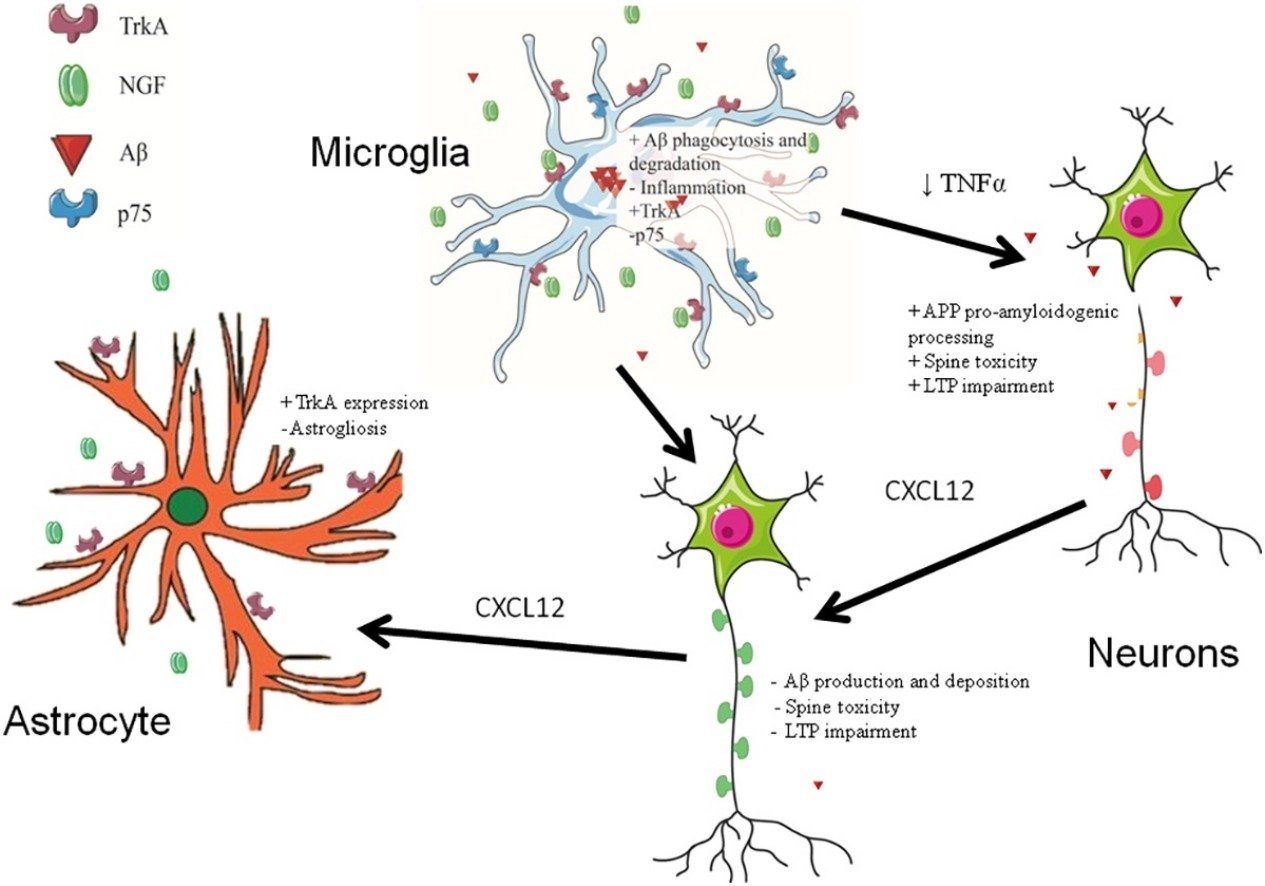
by NeoMed Clinic
•
10 Aug, 2021
What is Nerve Growth Factor (NGF)? Nerve Growth Factor (often simplified to the initialism NGF) is a protein composed of a group of molecules present in the brain for cognitive functioning. It is one of the four proteins (among BDNF, NT-3 and NT-4) to comprise of neurotrophins. Nerve Growth Factor is considered compulsory for the survival of both the sensory and sympathetic neurons in the brain. It contributes to the overall health of the brain by maintaining developed neurons while producing new ones. Nerve Growth Factor plays the pivotal role of promoting the survival, growth and maintenance of axons and neurons. This promotes a healthier passing of the electrical signal that passes through the nerves and repairs the coating around the axons known as the myelin sheath. The amount of naturally occurring Nerve Growth Factor varies from person to person. A study conducted on 157 healthy adults showed that although age did not make a significant difference, sex played a role in the amount of NGF, showing that females had a significantly lower rate than males. The female participants showed an average rate of 112 picograms per millilitres in contrast to the two 243 picograms per millilitres in males. Nerve Growth Factor was discovered by a developmental biologist and neurologist named Dr. Rita Levi-Montalcini. She received a Nobel Prize for her efforts in 1986. She claimed that to increase her health and her lifespan; she used Nerve Growth Factor eyedrops. Many diseases associated with Western cultures are related to low levels of Nerve Growth Factor such as obesity, metabolic syndrome, type 2 diabetes and atherosclerosis. However, higher levels of Nerve Growth factor are connected to increased numbers of histamine-producing mast cells and a variety of autoimmune diseases. List of Nerve Growth Factor (NGF) Supplements While Nerve Growth Factor is a naturally occurring substance in the human body, steps can be taken to increase amounts to treat and prevent disease. Natural lifestyle choices shown in test studies have been shown to increase Nerve Growth Factor. Providing a social environment at a young age has proved to be effective in mice. Yoga or daily cardio exercise routines of at least twenty minutes have been shown to affect as well. There are even sources citing “falling in love” or sexual activity to be factors. Time spent in the sauna or “heat shock” treatments is believed to be useful as well. The following supplements have either been proven to support the growth of Nerve Growth Factor or have strong evidence indicating such a conclusion: Lion’s Mane: The large, edible fungus known as Lion’s Mane has been proven to increase Nerve Growth Factor levels. PQQ: The antioxidant is known as PQQ, has been cited as a stimulant of Nerve Growth Factor, specifically in terms of regenerating peripheral nerves. ALCAR: Studies on rats have shown increased levels of NGF and other neurotrophins. Rosemary: The carnosic acid present in rosemary and rosemary extract has been shown to induce the production of Nerve Growth Factor. Quercetin: A correlation has not only been drawn to the intake of quercetin and increased Nerve Growth Factor, but the regeneration of peripheral nerves as well. Quercetin is present in ginkgo Biloba, adding to its many benefits. Zinc: In conjunction with adequate intake of Vitamin A and a diet/lifestyle promoting acidic pH levels, physicians and researchers believe that zinc may increase memory via the production of Nerve Growth Factor. Lithium: It has been noted that despite some less-than-ideal side effects, lithium has shown increased Nerve Growth Factor in sexually mature rats. After a fourteen-day trial, test subjects showed improved NGF rates in the hippocampus, frontal cortex, amygdala and limbic forebrain. Vitamin D3: Taken under the context of healthy blood sugar levels (the effect is impaired if it is high), 24-hour treatments of vitamin D3 have proven to increase the brain’s concentration of Nerve Growth Factor. Melatonin: In a thirty-day trial conducted on lab mice, direct injections of 1 mcg of melatonin to the submandibular gland resulted in an increased rate of Nerve Growth Factor. DHEA: It is believed that DHEA may contribute to the cortical neurons overproducing Nerve Growth Factor. However, further studies are needed to confirm this. Astragalus: Physicians and researchers believe that there may be a link between the promotion of Nerve Growth Factor and the intake of an extract of Astragalus and are interested in developing studies to explore this possibility. Bupleurum: Studies have shown a correlation between increased amounts of Nerve Growth Factor in the bloodstream and the intake of bupleurum, which is derived from a herb known as radix bupleuri – a herb indigenous to China. Ashitaba: Studies have shown a correlation between the daily intake of two teaspoons of ashitaba extract and an increase in production of Nerve Growth Factor by up to twenty percent. Yohimbine: Clinical trials conducted on rats showed increased norepinephrine in the bloodstream of the test subjects. This resulted in an increase of Nerve Growth Factor. Chrysin: As a result of pollination, the flavonoid chrysin found in a variety of plants and honey has been shown to increase levels of Nerve Growth Factor. Royal Jelly: The topical application of royal jelly has been proven to increase Nerve Growth Factor. Rehmannia: Clinical trials conducted on rats have shown that daily intake of Rehmannia improves the cognitive functioning on test subjects. This includes the improved capacity to learn and enhanced memory. Researchers believe that this is the result of the Rehmannia stimulating increased Nerve Growth Factor production in the hippocampus. Polygala Tenuifolia: Lab results have shown that the application of the root extract popular in Eastern medicine known as polygala tenuifolia increases secretions of Nerve Growth Factor. Best Foods for Nerve Growth Factor (NGF) Specific food types, eating habits, and regular exercise are beneficial for cognitive development and the increase of Nerve Growth Factor. Limiting one’s diet to sources of proteins, essential fats, complex carbohydrates, vitamins and minerals, while minimizing the number of empty calories is an ideal method of increasing Nerve Growth Factor and strengthening the brain. A diet low in saturated and trans fats is best. Habitual limitation of caloric intake prevents brain damage while enabling it to repair itself more adequately. A diet rich in fruits containing flavonoids such as blueberries and grapes, leafy greens and vegetables, organic soybeans and Omega-3 fats improves cognitive performance in both children and especially adults. Honey collected from certain plants has been shown to increase NGF, as it contains chrysin. Nerve Growth Factor (NGF) Benefits and Uses Nootropic / Cognitive Function: The development of nerves and connections in the brain, as a result of increased Nerve Growth Factor, has been shown to result in higher cognitive functioning. Treatment of Depression: Testing has shown that test subjects with higher levels of Nerve Growth Factor in their blood had a lower rate of Major Depressive Disorder than the control subjects. Prevention of Multiple Sclerosis, Alzheimer’s and Parkinson’s: In tests that utilize models of the human brain, Nerve Growth factors were shown to lower inflammation, promote the growth of myelin while repairing its damage and lessened the damage of brain tissue. These side effects have the benefit of preventing and slowing the damage of neurological diseases such as multiple sclerosis, Alzheimer’s disease and Parkinson’s disease. This has been confirmed by various studies. When a small test sample consisting of ten patients who had been diagnosed with Alzheimer’s disease were treated with a therapeutic transfer of NGF genes, their brain tissue showed growth, their axons sprouted neurons, and they showed an overall improved cognitive function. Heart Health: Clinical tests conducted on mice have shown that subjects treated with NGF were able to regenerate damaged nerves around the artery and blood vessels, eventually forming new blood vessels. It is believed that NGF treatments played a pivotal role in the healing process and that they can enable reparations to the heart after major damage or a heart attack. Diabetes/Pancreatic Health: Physicians have drawn a link between levels of Nerve Growth Factor and the health of the pancreas. It has been found that NGF is a necessary component to ensure the health of the beta cells within the pancreas. Those who have diabetes and similar diseases have shown to have low levels of NGF relative to control groups. Cancer Prevention: Nerve Growth Factor has been shown to hold preventative properties in the spread of specific types of cancerous cells. Specifically, NGF, in conjunction with regular intake of vitamin A has been shown to diminish the growth of pituitary and hypothalamic tumours, as well as slow the growth of lung cancer of the small cell variety. Fertilit y: Nerve Growth Factor is such an important contributor to the female reproductive system, that physicians and fertility experts have coined it as an “ovulation-inducing factor” (shortened to OIF). Within recent years, fertility experts have pinpointed NGF as a factor in the release of the egg from the ovaries of female mammals leading to its label as an OIF. They found that follicular fluid deficient of NGF in the ovaries, not only contribute to their inability to deliver egg cells but are also linked to a higher likelihood of endometriosis. Nerve Growth Factor appears to play a role in male fertility, as well as female fertility as it is a well-represented component of semen. What is the NGF Gene? The gene associated with the production of Nerve Growth Factor beta (also known as NGFβ) provides the necessary proteins to bind to the p75NTR receptor or the NTRK1 receptor. This process is important to the neurons’ survival and development, particularly for sensory neurons that process sensations of touch, temperature and transmit pain. What is the NGF Receptor? The Nerve Growth Factor receptor is also referred to as the p75 neurotrophin receptor or by the initialism, LNGFR (which stands for low-affinity nerve growth factor receptor). It serves as a receptor for Nerve Growth Factor, as well as other neurotrophins. This enables the neurotrophins to ensure the survival and differentiation of various cells present in neurons.

by NeoMed Clinic
•
15 Jun, 2021
The true evil behind Lyme disease ? Lectins!
Lectins are carbohydrate-binding proteins that work on a cellular and molecular level in our bodies. And in fact, there are a number of foods that are lectin-heavy. However, lectins pose a tremendous problem – they actually have the tendency to dismantle our immune system and our gut health, which can leave our bodies even more vulnerable to Lyme disease and chronic Lyme. It’s important to monitor your lectin intake to help prevent chronic Lyme.
If you’re ready to learn more about Lyme and lectins, take a look at our latest blog post!
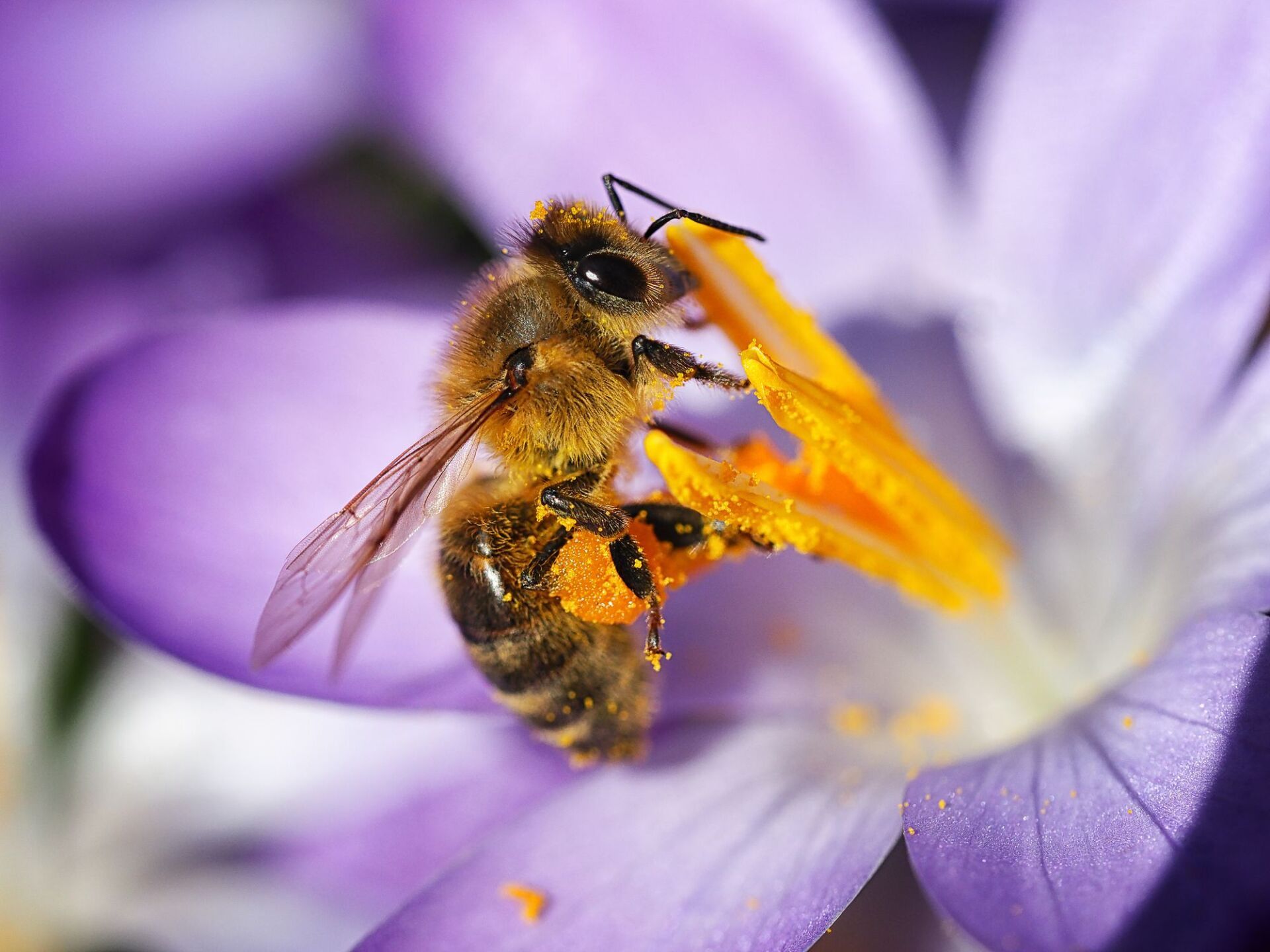
by NeoMed Clinic
•
07 Jun, 2021
What is bee pollen? Bee pollen, also known as ambrosia, is simply pollen packed together by honeybees to form pellets. When honey and bee secretions are added to bee pollen, it is referred to as bee bread. Bee bread is stored in brood cells of combs and acts as a major food source for young bees. For honeybees, making bee pollen is a rather long and intricate process necessary to ensure the survival of the colony. In order to make bee pollen, worker bees must first collect a substantial quantity of pollen grains. Once a worker bee lands on a flower, it initiates the harvesting procedure by scraping the loosely attached pollen off the anthers of the flower and moistening the pollen with a dash of honey that it brought from the hive. It does this using its front limbs and mandibles. The bee also uses pollen combs (enlarged tarsal segments covered with thick bristles) located on its legs, to brush off excess pollen from its body. By skillfully contracting its auricles, the worker bee is able to push the collected pollen grains into its pollen baskets (concave regions surrounded by a fringe of long hairs) located on the outside of its tibias. The worker bee will continue doing this until its baskets are fully loaded. When the pollen baskets are filled up, the microscopic pollen grains will be compressed into a single granule known as bee pollen. An interesting fact about bee pollen is that it cannot be perfectly re-engineered in a laboratory. Several chemical analyses have been conducted on natural bee pollen using state-of-the-art diagnostic equipment, but scientists have still not been able to identify some of the compounds present in bee pollen. When bees are fed bee pollen that has been synthesised in a lab environment, they die even though the bee pollen is nutritionally similar to natural bee pollen. As a result, researchers predict that bees add additional unknown compounds into bee pollen during its formation. These unidentifiable compounds may very well be the reason behind the medical marvels exhibited by bee pollen. Another fascinating fact about bee pollen is that it takes a single bee, working eight hours a day, for an entire month to collect one teaspoon of bee pollen. Each teaspoon of bee pollen contains over 2 billion pollen grains. A single grain of bee pollen contains more than two million pollen grains. Bee Pollen Uses Bee pollen has all of the nutritional components necessary for sustaining life. The levels of essential elements present in bee pollen are remarkably higher compared to wheat germ and brewer’s yeast. Bee pollen has been scientifically proven to correct various nutritional deficiencies plaguing our present-day societies that consume nutritionally incomplete foods, often loaded with toxic chemicals. Many cultures throughout the world use bee pollen for various purposes. Some of the common uses of bee pollen include: Preventing mild communicable diseases, such as the common cold Helping overcome mental retardation and other developmental problems in children Improving endurance and vitality Aiding recovery from chronic illness Weight gain during rehabilitation and recovery Curbing cravings and addictions Anti-cancer properties Bee Pollen Benefits Bee pollen is a nutritionally complete food source. It contains many nutritional elements that lack in animal products like meat, eggs and milk. Bee pollen has a higher protein percentage than any animal product of equal weight. Several medical reports have shown that bee pollen is nutritionally superior to common foods being consumed today. One such report by researchers at the Institute of Apiculture in Taranov, Russia states that bee pollen is the most nutrient-dense natural food known to man. It has incredibly high levels of vitamins, minerals, free amino acids, nucleic RNA (ribonucleic acid) and DNA (deoxyribonucleic acid). Bee pollen also contains high levels of rutin – a vital nutritional element responsible for maintaining healthy blood vessels. Health concerns related to nutritional deficiencies are on the rise worldwide. Since bee pollen contains most of the essential nutrients needed by humans, it is utilised on a large scale as a nutritional supplement to combat various nutrient deficiencies. Improved Physical Abilities Many renowned naturalists and athletic coaches have attested to the wonderful benefits offered by bee pollen to athletes. The British Sports Council conducted research on the effects of bee pollen on the strength levels of athletes. The findings of the study showed a 40-50 per cent increase in strength in the athletes taking bee pollen regularly. More astounding revelations came from the British Royal Society, which reported height increases in adults who consume bee pollen regularly. Antii Lananaki, the coach of the Finnish track team that dominated the 1972 Summer Olympics held in Munich, West Germany commented that most of their athletes take bee pollen food supplements. Studies that they conducted on bee pollen indicate that it considerably boosts physical performance. He also added that none of their patients experienced any negative effects from taking bee pollen. The late Alex Woodly, a coach/mentor for many Olympic gold-medal sprinters in the 1960’s-1970’s and a former head of the prestigious Philadelphia Pioneer Club was a true believer in the great benefits of bee pollen for athletes. He once said that bee pollen increases the strength and endurance of athletes by 25 percent with zero side effects. Unlike steroids and other artificial chemical substances that some athletes these days pump into their system, bee pollen is as natural as it gets- a true gift of vitality from Mother Nature. Just like Woodly, famous German naturalist Francis Huber was a great proponent of the nutritive benefits of bee pollen. Huber used to refer to bee pollen as “The greatest body-builder on Earth.” Immune Booster According to a report entitled, “Comparative Studies Concerning Biochemical Characteristics of Beebread as Related to the Pollen Preserved in Honey”, bee pollen supplementation significantly enhances immune function. This report outlines the findings of research conducted by Dr E. Palos, Z. Voiculescu, and C. Andrei of the Agronomic Institute, Faculty of Zootechnics Romania. The results of the research are as follows: Bee pollen supplementation was found to significantly increase the level of blood lymphocytes, gamma globulins and proteins. Lymphocytes, also known as white blood cells act as the immune system’s “fighters”. Apart from being the body’s first line of defence against disease-causing microbes, white blood cells also perform other duties like ridding the body of old, infected, mutated or cancerous cells and metabolic wastes. Gamma globulin is a protein synthesised in the blood. It plays a critical role in the body’s ability to ward off infection. Antibiotic Properties To date, experiments conducted on bee pollen have established that bee pollen has antibiotic properties that will inhibit the growth of some bacteria. These studies have specifically indicated that bee pollen is very effective against strains of salmonella and several other disease-causing agents. Regulates Intestinal Function Clinical studies have shown that bee pollen has a regulatory effect on intestinal function. This effect can be attributed to its high levels of cellulose and fibre, as well as the existence of antibiotic factors. Balances Cholesterol Researchers have reported that bee pollen has the ability to restore normal cholesterol and triglyceride levels in the body. When incorporated into the diet, bee pollen has been shown to increase the levels of high-density lipoproteins (HDL), while decreasing low-density lipoprotein (LDL) levels. Stabilisation of blood serum cholesterol levels has also been observed. Treats Cancer “Delay in the Appearance of Palpable Mammary Tumours in C3H Mice Following the Ingestion of Pollinated Food”, a research article written by William Robinson, Ph.D. and published by the United States Department of Agriculture (USDA) in the Journal of the National Cancer Institute (NCI) in October 1948 suggests that bee pollen can actually be used in the treatment of cancer, specifically breast cancer. In the article, Dr. Robinson clearly outlines all the experiments he carried out. The mice used in the research were bred in such a way that they would develop and subsequently die from mammary tumours. The age at which these mice developed tumours was between 18 to 57 weeks with an average appearance at 33 weeks. Tumour incidence in this strain of mice was 100%. The mice were divided into two groups; one group was fed only normal mice food, while the other group was fed mice food mixed with bee pollen in the ratio of 1 part bee pollen to 10,000 parts food. Since low body weight can delay the development of tumours, keen attention was paid to the weight of the mice. The mice being fed pollinated food registered no decrease in weight. Instead, they actually showed a slight increase in weight, possibly due to the nutritional factor in bee pollen. The results of Dr Robinson were as follows: The group of mice that were fed normal mice food developed mammary tumours as anticipated- at an average age of 31.3 weeks, while the group of mice that was fed pollinated food exhibited delayed mammary tumour development- at an average age of 41.1 weeks. Moreover, seven mice in this group still remained tumour-free at 56-62 weeks of age, when the experiments were terminated. Considering the fact that breast cancer is the second most common, newly-diagnosed cancer and second leading cause of cancer deaths among women in the United States, one would think that people would take this article seriously. Yet, the exact opposite of this has occurred. The scientific society has not even bothered to follow up on this promising line of research. Unfortunately, the National Cancer Institute has also simply discarded Dr. Robinson’s findings without any explanations. More promising findings came from the University of Vienna, where Dr. Peter Hernuss, along with other researchers, carried out a study involving 25 women suffering from inoperable uterine cancer. All the women were treated with chemotherapy since surgery was not an option. Some of these women were given bee pollen with their food, while others were given plain food without bee pollen. The women who received bee pollen supplementation rapidly exhibited an improvement in immune function, marked by increased levels of cancer-fighting cells. In addition to this, these women suffered less from the awful side effects of chemotherapy, such as nausea, insomnia and hair loss. The group of women who were not given bee pollen exhibited no comparable improvements. Treatment of Infertility Problems Bee pollen supplementation has been found to improve ovarian function in women suffering from infertility significantly. In women receiving bee pollen supplementation, an increased intensity of ovulation along with the ability of the ova to withstand the incubation period is observed in respect to the placebo group. For the best results, it is recommended for women to supplement with bee pollen in the ratio 2 parts per 100 of pollen and with the substitution of animal proteins with pollen in a proportion of 5 parts per 100. Treatment of Anemia Various studies involving lab animals have proven the effectiveness of bee pollen when it comes to treating anaemia. The ingestion of bee pollen by anaemic patients has been shown to considerably increase their levels of haemoglobin (the iron-rich oxygen-transport metalloprotein in the red blood cells). A significant increase in both lymphocytes (white blood cells) and erythrocytes (red blood cells) levels has also been observed in the patients. Weight Control Whenever the subject of weight control is brought up, many people tend to focus on weight loss rather than weight gain. This is probably because of the numerous health problems associated with being overweight. However, being underweight can still be as detrimental as being overweight. Just like there is a healthy maximum weight limit, there is also a healthy minimum weight limit. Some of the health issues associated with being underweight include; inhibited growth and development (especially in children and teens that are still actively growing), fragile bones, weakened immune system, anaemia, fertility issues and hair loss. So, how can one stay within the confines of a healthy weight limit? For one, incorporating a healthy diet into your daily regimen is a good way to start. With a diet consisting of all the macro and micronutrients in their appropriate amounts, both weight gain and weight loss are pretty much achievable. But, does such a diet exist? Why, of course, it does. However, such a diet can be pretty expensive for most people and rather cumbersome to maintain. The only cost-effective and straightforward alternative comes through the use of bee pollen. This food works miracles when it comes to weight-stabilisation or weight-control. In weight-loss programs, bee pollen activates the metabolic processes responsible for speeding up the caloric burn in the body. Given that bee pollen is one of the most nutrient-dense foods in the world, and it contains only ninety calories per ounce, makes it an exceptional weight-loss food. Lecithins (which are phospholipids, composed of phosphoric acid with glycerol, choline or other fatty acids usually glycolipids or triglyceride) play an important role in the lowering of body fat percentage. Since lecithin is a natural fat emulsifier, consuming more of it can inhibit fat storage. Bee pollen contains about 15% lecithin by volume. This makes it the perfect “fat burner.” Bee pollen contains significant amounts of the essential amino acid L-Phenylalanine, which is a known appetite suppressant. L-Phenylalanine works by stimulating the release of cholecystokinin- a gut hormone which signals the brain to slow down digestion creating sense satiety shortly after eating. Bee pollen also curbs cravings by filling in nutritional gaps that may exist in your diet. In a weight-gain program, bee pollen can be used as a nutritional supplement. According to several studies, an average bee pollen sample roughly contains 20% proteins, 25% carbohydrates, 5% fatty acids, and the remaining 50% is composed of minerals, fibre, vitamins, enzymes and water. Health and Beauty Beauty can be seen as directly correlated to health. Our health involves what we put in and on our bodies. After all, you are what you eat! Eating a healthy diet and using natural skin products will go a long way in determining how you look. In today’s weight-conscious society, having a beautiful face is not enough. Physique plays a significant role in your overall appearance. When bee pollen is included in the daily diet, it not only provides you with essential nutrients to keep your skin healthy and radiant, but it also aids in safe weight control. Bee pollen can also be blended with other natural ingredients to make relatively inexpensive body lotions and creams for adding that extra touch of radiance to every inch of the outside of your body. Dr. Lars-Erik Essen, a renowned dermatologist from Helsingborg, Sweden and a pioneer in the field of bee pollen and skincare products, has successfully treated many of his patients suffering from various skin conditions using bee pollen skin products. Dr Essen argues that bee pollen exerts impressive effects on the skin via transcutaneous nutrition, primarily, because it contains a high concentration of RNA and DNA as well as antibiotic factors. Some of these effects include preventing premature ageing of skin cells, stimulation of blood flow to the skin, activating the growth of new skin tissue and protection against dehydration. All these positive effects make the skin become smoother, healthier and less prone to wrinkles. Two Russian scientists, Professors N. Mankovsky and D. G. Chebotarev, carried out research and proved that bee pollen stimulates skin cell renewal. The two scientists asserted that the rejuvenation of skin and body cells could be encouraged by the interaction of the elements present in bee pollen such as microelements, poly-vitamins, enzymes, amino acids and hormones. The professors went on to refer to the properties of bee pollen as being vital to a form of internal and external rejuvenation at the cellular level. Allergy Treatment Over the ages, bee pollen has been used by many cultures as a remedy for allergies and hay fever. But, given the fact that pollen is a common allergen, many people would consider it foolish to use it as a remedy against allergies. Nonetheless, bee pollen still works! So, how does this golden dust work? To understand the concept behind the workings of bee pollen, it is imperative that we first know how immunisation works. This is because their working principles are more or less similar. During immunisation, an individual is given an attenuated (weakened) form of the disease-causing micro-organism to ‘trick’ the recipient’s immune system into thinking that the body is under attack. In response to this false alarm, the immune system will produce antibodies to counteract the infection. The immune system will then keep a memory of this attack enabling it to work quickly and more efficiently during future attacks by similar microbes. In the treatment of allergies using bee pollen, a technique similar to immunisation is used. This technique is known as desensitisation. Scholars developed desensitisation at St. Mary’s Hospital Medical School in London during the early 19th century. The treatment involves administering small doses of the allergen- which in this case is bee pollen- to the patient to elicit an immune response that will eliminate the allergic reaction. After the elimination of the allergic reaction, the immune system will record the attack and make more antibodies to counter a similar allergic response in the future. For the treatment to work, the patient must be repeatedly given small doses of the allergen over a certain period of time, usually not less than 6 weeks before the beginning of the season and throughout the season. Leo Conway MD., an early pioneer in the field of allergies from Denver, Colorado, treated his patients of various illnesses using bee pollen. Given that oral feeding of pollen for the treatment of multiple ailments was first perfected in his lab, astounding results were obtained. Dr. Conway reported that ninety-four percent of all his allergy patients were completely cured of their allergies. All the patients who had taken bee pollen for three years stayed allergy-free regardless of their lifestyles. Even the remaining six percent, most of who failed to follow the prescription correctly, exhibited some sense of well-being after the treatment. Dr Conway asserted that control had been achieved in 100 per cent of his previous cases and the field is ever-growing. He also added that no ill side effects were recorded from the uses of bee pollen. Some of the illnesses that Dr Conway has successfully treated include hay fever, ulcers of the digestive tract, pollen-induced asthma, bronchitis, sinusitis, colitis, migraine headaches and urinary tract disorders. Bee Pollen Dosage Appropriate bee pollen dosage will depend on various factors- the form of bee pollen you are planning on taking (capsules or granules), your reasons for taking bee pollen, your past experience using bee pollen, your medical history etc. If you are trying out bee pollen for the first time, it is always important to consult your doctor first. Most of the bee pollen sold in health stores will come with guidelines on how to use it. If you happen to buy bee pollen that has no direction on how it should be taken, you can always consult a local herbalist or the person who sold it to you. But, be careful who you ask for advice as some people may mislead you knowingly or unknowingly. The good news, however, is that there are no known Bee Pollen overdoses. Still, it is important to start small and work up to the amount that works for you as some people may be allergic to Bee Pollen. Recommended dosage: There is no scientifically proven dosage for Bee Pollen. Some people recommend anywhere from 500mg to 2000mg of Bee Pollen per day, but there is no proof of the effects this has. It is recommended you start with a low dosage and increase it based on how you feel.
by NeoMed Clinic
•
11 Feb, 2021
Assessment Screening assessments are advisable when evaluating psychiatric symptoms when the possibility of LB may be present. Screening questions: • Do you live, vacation or engage in activities in areas that may expose you to ticks? • Have family members, neighbors, or the family dog or cat been infected? • Is there a history of a tick bite, possibly with a flu-like illness and/or a bull’s eye or other rash? • Is there a point at which your health declined, followed by a fluctuating progression and development of multi-systemic symptoms, including cognitive, psychiatric, neurological, and somatic symptoms adversely impacting school, social life, family life? • Have you ever been treated for Lyme disease, suspected you had Lyme disease but was told it was ruled out? • Have antibiotics ever caused a sudden worsening followed by an improvement of symptoms? If the screening assessment increases diagnostic suspicion a further assessment is indicated. LB is diagnosed just like any other neuropsychiatric condition by a comprehensive psychiatric clinical exam relevant to patient’s complaints and findings with a thorough history, mental status exam, review of systems, neurological exam, physical exam, a knowledgeable interpretation of laboratory findings, pattern recognition and clinical judgment. In considering the diagnosis it is important to look for relapsing progressive multi-systemic symptoms, including cognitive, psychiatric, neurological, and somatic symptoms and to remember the greater the multisystemic comorbidity, the greater the likelihood of a condition impacting the entire body such as a complex infectious disease. The presence of a comorbid condition does not rule out the presence of LB A comprehensive assessment includes an assessment of the following: • Cognitive: Attention (sustained attention, allocation of attention, distracted by frustration), hypersensitivity (auditory, visual, tactile, olfactory); inability to filter sensory input resulting in stimulation overload; memory (working memory, working spatial memory, short-term memory, long-term memory, word retrieval, number retrieval, name recall, facial recognition, procedural memory, geographical memory); processing (slow processing, letter reversals, spelling errors, word substitution errors, number reversals, reading comprehension impairments, auditory comprehension impairments, sound localization impairments, spatial perceptual distortions, optic ataxia, impaired transposition of laterality, left-right confusion, impaired calculation abilities, impaired fluency of speech, stuttering, slurred speech, impaired fluency of writing, impaired handwriting); executive functioning (unfocused concentration, brain fog, prioritizing multiple tasks, multitasking, racing thoughts, intrusive thoughts, obsessive thoughts, mental apathy, abstract reasoning impairments, time management impairments) • Imagery: depersonalization, derealization, capacity for visual imagery, hypnagogic hallucinations, vivid nightmares, illusions (auditory, visual), hallucinations (auditory, especially musical, visual, olfactory, sensory). • Emotional: decreased frustration tolerance, abrupt mood swings, hypervigilance, paranoia, anhedonia • Behavioral: disinhibition, exaggerated startle reflex, explosive anger, suicidal, homicidal, accident prone, decreased social functioning, decreases school or job productivity, family and marital conflicts, substance abuse, legal difficulties, dissociative episodes, compensatory compulsions, dropping objects, crying spells, self-mutilation • Psychiatric syndromes: depression, rapid cycling bipolar illness, panic disorder, obsessive compulsive disorder, social anxiety disorder, generalized anxiety disorder, posttraumatic stress disorder • Sleep disorders: non-restorative sleep, early insomnia, middle of night insomnia, early morning insomnia, excessive daytime sleepiness, loss or reversal of circadian rhythm, restless leg, paroxysmal nocturnal limb movements, sleep apnea (central and/or obstructive), sleep paralysis, hypnagogic hallucinations, sleep attacks, cataplexy, narcolepsy • Eating disorders: anorexia, weight loss, emotional overeating, carbohydrate craving, weight gain (with or without increased food intake) • Sexual: decreased libido, increased libido, decrease capacity for arousal, decreased capacity for orgasm, altered sexual imagery • Temperature control: body temperature fluctuations, flushing, intolerance to heat, intolerance to cold, decreased body temperature, low grade fevers, night sweats, chills • Headaches: cervical radiculopathy, migraine, thunderclap, tension, cluster, sinus, scalp tenderness, temporal mandibular joint, coital cephalalgia • Cranial nerves: I: loss of smell, altered taste; II/eye: blurred vision, photophobia, intolerance of fluorescent or flickering light, floaters, flashes, conjunctivitis, eye pain, dry eyes, blind spots, night blindness, peripheral shadows, panopsia, papilledema, iritis, uveitis, optic neuritis; II, IV, VI: double vision, eye drifts when tired, ptosis; V: sensory loss and/or pain in any of the three branches on either side; VII: Bell’s Palsy; VIII: tinnitus, hearing loss, dizziness, vertigo, motion sickness, Tulio’s sign, mal de debarquement; IX, X: episodic loss of speech, choking on food, difficulty swallowing; XI: sternocleidomastoid, trapezius pain and/or weakness; XII: tongue deviates to side • Seizures: complex partial, grand mal • Neuropathy: numbness, tingling, sensory loss, burning, crawling sensation (formication), static electricity sensation, stabbing sensation, weakness • Other neurological: fatigue, tremor, twitching, muscle tightness, myoclonic jerks, tics, Tourette’s, ataxia, spasticity, meningismus, disc disease, positive Romberg, postural tachycardia syndrome (POTS), ortho static hypotension, gait disturbances, spinal cord signs, white matter lesions, sensation of vibration • Musculoskeletal: Joint pain, migratory joint pain, swelling, tightness, crepitations, neck and back discomfort; periostitis and bone tenderness of tibia, ribs, iliac crest, sternum, clavicle; epicondylitis; plantar fasciitis, foot tenderness; fibromyalgia; myalgia, costochondritis (ear, nose, costochondral junctions, xyphoid); tendonitis; carpal tunnel syndrome • Cardiac: chest pain, heart block, irregular heart rate, mitral valve prolapse, racing pulse, POTS, pericarditis, cardiomyopathy, murmur, hypertension, hypertensive crisis • Pulmonary/upper respiratory: shortness of breath, air hunger, cough, sore throats, swollen glands, asthma • Gastrointestinal: Reflux, irritable gut, nervous stomach, irritable bowel, abdominal bloating, reduced gastrointestinal motility, gastroparesis, cholecystitis, gall stones • Genitourinary: Spastic bladder, genital pain (testicular/pelvic), menstrual irregularity, breast tenderness, sexual dysfunction, decreased libido, urinary incontinence, interstitial cystitis • Immune: fevers, sweats, chills • Other: alcohol intolerance, hair loss, thyroid disease, adrenal insufficiency, hypoglycemia, ankle edema, tooth pain, periodontal disease, nose bleeds, ecchymoses, splenomegaly, multiple chemical sensitivities, allergies, lymphocytoma, stria, acrodermatitis chronicum atrophicans The more common symptoms seen in LB include poor attention span, being easily distracted by frustration, sensory hypersensitivity causing patients to feel overwhelmed, poor short-term memory, dyslexia symptoms, slow processing, executive dysfunction, brain fog, poor time management, depersonalization, intrusive images and thoughts, musical hallucinations, low frustration tolerance, abrupt mood swings, impulsivity, paranoia, explosive anger, suicidality, anhedonia, decreased productivity, depression, long duration panic attacks, social anxiety, generalized anxiety, obsessiveness, non-restorative sleep, appetite disturbances, decreased libido, headaches, cranial nerve symptoms, neuropathy, autonomic nervous system symptoms, musculoskeletal symptoms, gastrointestinal symptoms, genitourinary symptoms, cardiovascular symptoms, fatigue, chronic pain and alcohol intolerance

by NeoMed Clinic
•
06 Jan, 2021
The latest scientific research has revealed that 90% of all the cells in your body are microbes. Another way of saying this is that there are 20 times more “bugs” in your body than there are of your cells. Our society has completely bought the concept that we get sick because of the presence of microbes, but is that the complete story, or even the true story? In cases of Lyme disease, for instance, it seems very self-evident in some cases that “I was bitten by a tick which regurgitated its stomach contents into the body which introduced Borrelia burgdorferi bacteria into your body…a bulls-eye rash developed around the bite site…and soon, many symptoms started showing up. This sounds plausible that the bacteria caused the illness. But does it explain everything? Not really. Consider that only about 40% of people ever develop a bulls-eye rash. Many people never were bitten at all. Many who test highly positive never have any symptoms…ever! How you act, and the physical symptoms you suffer from may have more to do with your ancestors than with your lifestyle. The theory of epigenetic miasms may explain some of what makes you uniquely prone to the types of problems you experience that are collectively called Lyme disease. This is not “new age”, nor are we talking about genetic mutations, but it is more of an epigenetic phenomenon. An Epigenetic miasm, by definition, is a predisposition, or tendency, of certain psychological and physical problems that are set in motion by illnesses in your family history going back seven generations, or acquired within your lifetime. Epigenetic miasms are due to changes in the expression in genes that are not due to underlying changes in the actual DNA sequences. Epigenetic miasms are not to be confused with genetic abnormalities, such as missing or mutated genes. Epigenetic miasms are more of an energetic and epigenetic abnormality. John Davidson, a researcher and author on bio-energetics, states that “Miasms are essentially an energy disharmony, disease pattern or imbalance.” Scientific research dating back over 200 years documents the reality of these epigenetic problems, though the term epigenetics was only coined recently when researchers on the Human Genome Project realized that instead of the expected 200,000+ gene sequences they only found humans have only 25,000. What this means is anyone who is expecting genetic engineers to be able to come up with a cure for every illness can stop waiting. The problems are not to be found in incorrect sequences of genes in most situations. Therefore the term "epigenetics" was coined to explain the energetic phenomenon that expresses through the DNA as opposed to the actual DNA structure be the end all cause of illness. Epigenetic miasms are usually started by improperly treated illnesses that can go back as far as seven generations of your family tree. In other words, some of the tendencies to problems you have could be the result of illnesses or medications experienced by your great, great, great…grandparents. For over two hundred years, scientists have been tracking the epigenetic miasms caused by specific illnesses. Today we have immense collections of data outlining what kinds of problems future generations may experience due to different illnesses. Gonorrhoea, syphilis, tuberculosis, cancer, and many more, all will generate a specific set of problems unique to the illness when suppressive therapies are used to treat them. Homeopathic texts have pages of symptoms of the body and mind, which are completely predictable in a miasmatically affected family line for each type of miasm. Antibiotics are a suppressive therapy and the major culprit to creating epigenetic miasms. The antibiotics do kill most of the bacteria that cause these different illnesses, but they do nothing to address the damage already done by the bacteria on a physical and bio-electrical level in the patient’s body. For example, if you find that you have termites in your house, you can call an exterminator to come out and kill the termites. By killing the termites, you have eliminated any worsening of the problem; however, you have done nothing to correct the myriad of tunnels through the woodwork of your house. To make matters worse, you now have a very toxic chemical insecticide in your house. The energetic (epigenetic) tunnels and toxins in the body, in a nutshell, are what cause epigenetic miasm to occur. It can also be likened to using a computer that is infected with a computer virus to build new computers. The new computers will be similarly affected. Epigenetic miasms are very much like a computer virus in your body's operating system. It doesn't kill you outright. It only corrupts various aspects of your body's operating systems when activated by certain stressors in your life. Epigenetic miasms predispose you to react to the tick bite and developing the myriad of symptoms we call Lyme disease. It is very obvious that the bacteria affect the areas of the body, which were epigenetically weakest first, and then as more body systems become compromised, they move in and cause even more symptoms. The point that is clear is that if the underlying epigenetic flaws are addressed in advance or even after the initial bite, and the overall coherence of the body is restored, and the microbial load is reduced, then we would see a gradual disappearance of symptoms. One of the primary reasons to be treated for epigenetic miasms in young people is to avoid passing on to their offspring, the epigenetic flaws that were associated with having had Lyme disease. The following is a list of known epigenetic miasm tendencies or predispositions from two major categories related to Lyme disease. Antibiotic-Induced epigenetic flaws and Syphilis epigenetic flaws (a very close relative of the Lyme spirochete). Remember, a person may never manifest any of these tendencies unless their life is unbalanced in some way. Antibiotic-Induced Epigenetic Predispositions: Friends to the world, very charismatic, but hardest on the ones they love the most Emotional abuse, psychological warfare, never physically abusive Wild feeling, abrupt, impulsive Get better if left alone Say they are sorry a lot because they recognize when they are wrong but are somewhat helpless to stop the anger once initiated Night people. Get happier the later it gets, and most symptoms are worse in the morning getting better in the evening Grumpy/irritable in the morning, generally like a darkened room over bright sunshine in the morning Melancholy, sad, dismal outlook, but hurried and anxious High sex drive Prone to morning mucus but clears as the day goes on Prone to low back pain and rheumatic aches and pains Nocturnal bedwetting Craves oranges, ice, very thirsty Ravenous appetite, hunger soon after eating Heels and ball of the feet tender Burning of the hands and feet Asthma, diabetes, ovarian pain, shoulder pain, sciatica, warts, headaches, liver abscess, pelvic cellulitis, vertigo The sensation of a cavity where the heart ought to be Lyme Epigenetic Predispositions: Mindset: Hopeless and despairs of recovery Antisocial and apathetic Fears the night all symptoms worse at night Fears the suffering from physical and mental exhaustion upon awakening… utter prostration and debility in the morning Pains from darkness to light Very nervous laughs/weep without cause Feels as if going insane or being paralysed Family history and predisposition to alcoholism Impulse to wash hands Profound Insomnia with great restlessness at night Restless Leg Syndrome… impossible to keep the legs in one position Excessive saliva which runs out of the mouth when sleeping Vomiting/nausea, chronic for weeks or months Heartburn with pain and rawness of the stomach Stupefying Headaches…deep crushing pains across temples Hair Loss Asthma and coughing, worse sunset to sunrise Chilly but sweats at night with exhaustion Pain in the back in the kidney region, worse after urinating Chronic tooth decay The items on these lists are by no means complete. They simply give you an idea of what symptoms may be seen in a predisposed individual that gets bitten by a tick and is treated with antibiotics and who has a family history of Syphilis and antibiotic usage for any reason. In this world of antibacterial soaps, cleaners, and prescription antibiotics, you can see that the “Germ Theory” is alive and well in America. But are they truly the “cause of your illness”? What I have told you so far undoubtedly sounds totally contrary to everything you thought you knew about germs and infectious disease. Germs are not the cause of illness; they initiate the reaction in a predisposed individual. An analogy presented by Dr Otto Wolf, M.D., likens infectious disease to that of an explosion. Dr Wolf says, “The spark is the not cause of the explosion, it merely initiates the explosive potential of the dynamite. In this analogy, the spark is the bacteria, which initiates the disease potential of the individual.” Husemann F. and Wolf O., The Anthroposophical Approach to Medicine, Vol III. 1989 If your body has no “explosive potential” then bacteria cannot “ignite” an infectious disease. No one who is not predisposed through imbalance/dysfunction can ever develop an infectious disease. At this point, we need to clarify a very important point; there is a big difference between “infection” and “infectious disease”. Infection is a component of the tissue of the body, while the infectious disease is a factor of the human organism. Letterer, Die Medizinische (1953) In other words, infection merely means that you have a microbe in the tissues of the body…quite an understatement when considering 90% of what you think is you is actually them (microbes). The integrity of the human organism dictates whether or not that infection proceeds to cause the symptoms of infectious disease. You may have a potentially lethal microbe in the tissues and never manifest any disease because of it. However, once an infectious disease is initiated, it will take a course independent of the type of microbe. F. Horing, Klinische Infedtionslehre, 3rd ed. (Berlin: 1962) Its course is dictated by the host’s ability to adapt instantly and correctly to any changes in its internal and external environment, as well as the epigenetic miasms that are altering the person’s adaptability. This is why 600 thousand people can have the same type of bacterial infection and yet have totally different symptoms. With the Human Genome Project only being completed in recent years, very few doctors have even heard of epigenetic miasms and still fewer are trained in dealing with them. It requires special knowledge in recognizing the many types of miasms that may be present in a patient. These epigenetic miasms cannot be treated until a level of integrity and coherence is achieved in the patient, and their case is somewhat stabilized. Epigenetic miasms are a bio-energetic flaw in the “software” bio-communication/bio-regulation systems of the body, and therefore there is no “hardware” solution in the pharmaceutical realm.
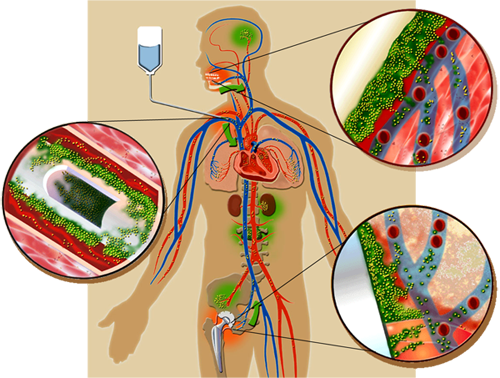
by NeoMed Clinic
•
02 Jan, 2021
Biofilms are densely packed communities of microbial cells that grow on living or inert surfaces and surround themselves with secreted polymers. Many bacterial species form biofilms, and their study has revealed them to be complex and diverse. The structural and physiological complexity of biofilms has led to the idea that they are coordinated and cooperative groups, analogous to multicellular organisms.1) Researchers have estimated that 60-80 per cent of microbial infections in the body are caused by bacteria growing as a biofilm – as opposed to planktonic (free-floating) bacteria. There is a perception that single-celled organisms are asocial, but that is misguided. When bacteria are under stress—which is the story of their lives—they team up and form this collective called a biofilm. If you look at naturally occurring biofilms, they have very complicated architecture. They are like cities with channels for nutrients to go in and waste to go out. Andre Levchenko, PhD, Johns Hopkins University Some external biofilm, namely chronic wounds and dental plaque, can be manually removed. Because of their inaccessibility and heightened resistance to certain antibiotic combinations and dosages, internal biofilm is more difficult to eradicate. Biofilm bacteria are a part of what is known as the Th1 bacterial pathogens, which collectively cause chronic disease.
